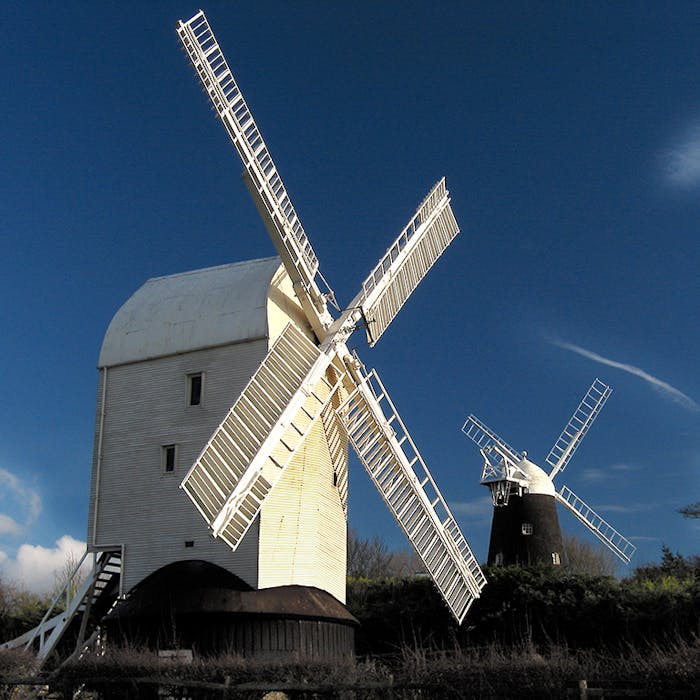
Windmills in Britain
Windmills are known to have been used to grind corn in Britain for some 800 years, though they are believed to have originated in the Middle East. It is uncertain how their use spread to Britain, but it is thought the idea might have been brought back by the Crusaders, or that they were an adaptation of Roman water mills. They steadily became familiar structures within the UK.
The first recorded windmill in Britain is dated 1185 and was situated in Yorkshire, in the former village of Weedley, which stood at the southern tip of the Yorkshire Wolds. During the 13th century, a large number of windmills appeared in the vales of Pickering and York and in the Wolds. By the end of the fourteenth century there were at least 70 windmills in the East Yorkshire region. One of the reasons for their popularity in this area was the lack of fast-flowing streams and rivers preventing the use of water power.
Windmills took the form of cylindrical or box-shaped structures, and were often built of stone or timber, and were characterised by their enormous wooden slatted and canvas sails.
Windpower was captured by at least four different types of sails, the simplest being a wooden lattice framework that the canvas sheet was spread over to catch the wind. A more complicated system, spring sails, was patented by Andrew Meikle in 1772. The sail was divided into a number of bays with each bay having a number of shutters in it. Roller reefing sails were invented by Stephen Hooper in 1789. As with spring sails, the sail is divided into a number of bays. Finally, Patent Sails were invented by William Cubitt in 1813. These combine the shutters of the spring sail with the automatic adjustment of the roller reefing sail. A traditional way of conveying joyful, sorrowful and important occasions to local people was by setting the sails to different positions.
There were also different kinds of stones used for milling, reflecting locally available materials around the UK, but also others imported from abroad including the most popular stones for grinding flour were French burr. These were made from fine-grained re-crystallised quartz deposits.
By 1840 there were more than 10,000 windmills in England, 2,000 more than in Holland.
But by 1879, their use was declining. One reason was the increasing use of steam power. Portable steam engines had at first been used to provide additional power at windmills, but gradually steam became the sole source of power. Engine houses were added to existing mills.
The second reason for the decline was the use of cheaper imported Canadian wheat. This was harder than English wheat and could not be ground using millstones. A new method of grinding using cast iron rollers was invented and new mills, powered by steam, were built. The spread of the railways meant that this grain could then easily be transported throughout the country. It was no longer necessary for each village to have its own mill.
Further reading
Links to external websites are not maintained by Bite Sized Britain. They are provided to give users access to additional information. Bite Sized Britain is not responsible for the content of these external websites.
